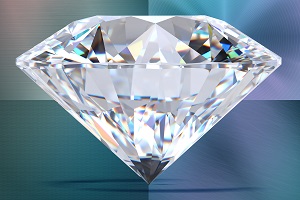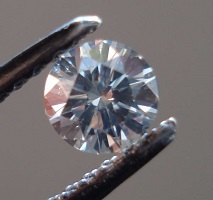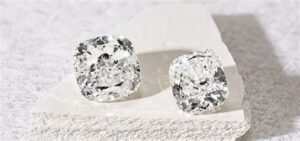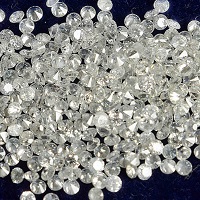Diamond Buying Guide: Your Comprehensive Resource for Purchasing Diamonds
When it comes to purchasing diamonds, having a thorough understanding of the process can make all the difference. This diamond buying guide aims to provide you with all the essential information you need to make an informed decision. From understanding the 4Cs to recognizing the importance of certification, this guide will equip you with the knowledge to confidently select the perfect diamond.
Buying Diamonds Online: Navigating the Digital Marketplace with Confidence
In today’s digital age, buying diamonds online has become increasingly popular. However, it is crucial to approach this process with caution and awareness. This section will explore the benefits and potential pitfalls of purchasing diamonds on the internet, offering tips on how to identify reputable online retailers, verify certifications, and ensure a secure transaction. By following these guidelines, you can enjoy the convenience of online shopping while minimizing risks.
Diamond Grading Explained: Understanding the 4Cs and Beyond
Diamond grading is a complex process that involves evaluating various characteristics of a diamond to determine its quality and value. The 4Cs—Carat, Cut, Color, and Clarity—are the primary factors considered in diamond grading. This section will delve into each of these aspects, explaining how they impact a diamond’s appearance and worth. Additionally, we will discuss other important factors such as fluorescence, symmetry, and polish, providing a comprehensive understanding of diamond grading.
Carat Weight: Measuring the Size of a Diamond
Carat weight is one of the most straightforward aspects of diamond grading. It refers to the weight of the diamond, with one carat equaling 200 milligrams. While larger diamonds are often more valuable, it is important to consider the other 4Cs in conjunction with carat weight to determine a diamond’s overall quality and value.
Cut: The Art of Crafting a Brilliant Diamond
The cut of a diamond is perhaps the most critical factor in determining its beauty. A well-cut diamond will reflect light in a way that maximizes its brilliance and sparkle. This section will explore the different types of diamond cuts, such as round, princess, and emerald, and explain how the cut affects a diamond’s overall appearance.
Color: The Subtle Hues that Define a Diamond’s Beauty
Diamonds come in a range of colors, from completely colorless to those with noticeable hues. The color grading scale ranges from D (colorless) to Z (light yellow or brown). This section will explain how color impacts a diamond’s value and appearance, and provide tips on selecting a diamond with the most desirable color grade for your preferences and budget.
Clarity: Evaluating the Flawlessness of a Diamond
Clarity refers to the presence of internal or external imperfections, known as inclusions and blemishes, within a diamond. The clarity grading scale ranges from Flawless (no inclusions or blemishes visible under 10x magnification) to Included (inclusions and/or blemishes visible to the naked eye). This section will help you understand how clarity affects a diamond’s appearance and value, and offer advice on choosing a diamond with an appropriate clarity grade.
Certification: The Importance of Third-Party Verification
When purchasing a diamond, it is essential to obtain a certification from a reputable gemological laboratory, such as the GIA (Gemological Institute of America) or AGS (American Gem Society). This certification provides an unbiased assessment of the diamond’s quality and ensures that you are getting what you pay for. This section will explain the significance of certification and guide you on how to verify the authenticity of a diamond’s certificate.
Fluorescence: Understanding its Impact on a Diamond’s Appearance
Fluorescence refers to the glow that some diamonds emit when exposed to ultraviolet (UV) light. While fluorescence can affect a diamond’s appearance, its impact varies from diamond to diamond. This section will discuss the different degrees of fluorescence and how they can influence a diamond’s value and visual appeal.
Symmetry and Polish: The Finishing Touches of a Diamond’s Craftsmanship
Symmetry and polish are important aspects of a diamond’s overall craftsmanship. Symmetry refers to the alignment and proportion of a diamond’s facets, while polish pertains to the smoothness of its surface. Both factors contribute to a diamond’s brilliance and overall appearance. This section will explain how symmetry and polish are evaluated and their significance in the grading process.
Shopping with Confidence: Choosing a Reputable Jeweler
Whether you are buying diamonds online or in person, selecting a reputable jeweler is crucial to ensuring a positive purchasing experience. This section will offer tips on how to identify trustworthy jewelers, such as checking for accreditation, reading customer reviews, and asking for recommendations. By choosing a reputable jeweler, you can shop with confidence and peace of mind.
The Role of Budget: Balancing Quality and Affordability
When buying a diamond, it is essential to establish a budget that balances quality and affordability. This section will provide guidance on how to set a realistic budget, prioritize the 4Cs based on your preferences, and make informed decisions that align with your financial constraints. By understanding the relationship between quality and cost, you can make a purchase that meets both your expectations and budget.
Caring for Your Diamond: Maintenance and Protection Tips
Once you have purchased your diamond, proper care and maintenance are essential to preserve its beauty and longevity. This section will offer practical tips on how to clean, store, and protect your diamond jewelry, ensuring that it remains in pristine condition for years to come.
Understanding the Diamond Market: Trends and Insights
The diamond market is constantly evolving, with trends and insights that can impact your purchasing decisions. This section will explore current trends in diamond cuts, colors, and settings, as well as provide insights into the factors that influence diamond prices. By staying informed about the diamond market, you can make more strategic and informed buying choices.
The Ethical Considerations of Diamond Buying
In recent years, ethical considerations have become increasingly important in the diamond industry. This section will discuss the significance of conflict-free diamonds, the Kimberley Process, and other ethical practices that ensure responsible sourcing. By understanding these considerations, you can make a more informed and ethical choice when purchasing a diamond. Buy gold bullion Australia.
Mastering the Art of Diamond Buying
With the knowledge and insights provided in this diamond buying guide, you are well-equipped to master the art of diamond buying. Whether you are purchasing a diamond for an engagement ring, a special occasion, or as an investment, understanding the key factors that influence a diamond’s quality and value will empower you to make a confident and informed decision. Shop with confidence at Diamonds and Gold Africa, known for their commitment to quality and trust.




